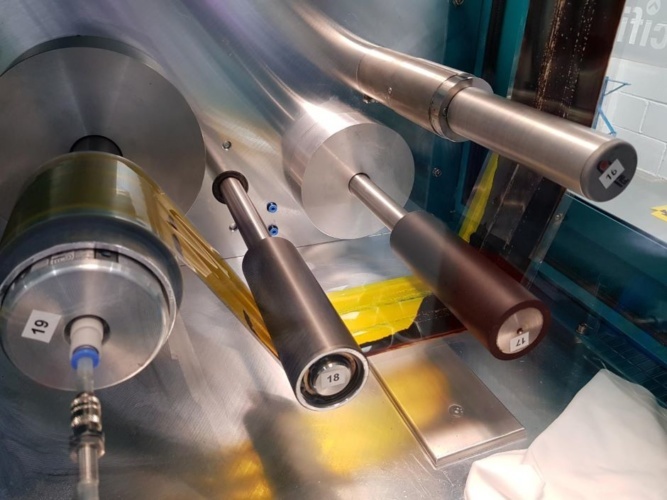printable solar cells could reshape buildings
Printable solar cell developed by the Swansea University may help slow down and reverse the energy crisis, saving the environment and combatting climate change
A team at Swansea University’s SPECIFIC Innovation and Knowledge Centre, led by Professor Trystan Watson, has reported using a roll-to-roll fabrication method for four layers of slot-die coated PSCs.

Buildings are responsible for around 40% of the UK’s energy consumption and associated carbon emissions. Professor Trystan Watson’s Printed Photovoltaics (PV) research group at the University of Swansea is developing a range of solar cell technologies and processing techniques that will allow high-efficiency thin-film photovoltaics to be manufactured at scale using earth-abundant, low cost materials.
These technologies focus on the decarbonisation of heat and power in buildings, for the benefit of occupants and owners, wider society and the energy infrastructure.
The method
Prof. Trystan’s research group is working to understand the stability and lifetime of these devices, by characterising their degradation mechanisms and finding ways to improve longevity. The group is ‘technology agnostic’, which means that they work with the most promising photovoltaic technologies to find ways to manufacture them at scale. Currently, the research is focussed on four distinct technologies:
- perovskites
- CZTS (copper, zinc, tin, sulphur)
- organic photovoltaics
- dye sensitised solar cells
Using SPECIFIC‘s state-of-the-art pilot manufacturing facilities and collaborating with local business, the group works to determine the loss mechanisms associated with scale-up, reduce fabrication time and ensure the widest range of substrates by building devices on sheet processed glass and roll-to-roll metal or plastic.

The impact
The research develops technology that feeds into the Active Buildings concept, where buildings generate, store and release their own heat and electricity from solar energy. Swansea University’s Active Building Centre is a place that powers itself using some of the latest innovations in solar energy.
The PV work specialises in the scale-up of technology from the lab to full-scale building demonstrations. As well as showcasing the technologies, our demonstrators are used to monitor and develop systems under realistic conditions and in a range of building uses. The research is also exploring other applications of this technology, such as Perovskite for Aerospace.
Sources: Swansea University I Theengineer.co.uk
cover photo: Swansea University
Maker Faire Rome – The European Edition has been committed since eight editions to make innovation accessible and usable to all, with the aim of not leaving anyone behind. Its blog is always updated and full of opportunities and inspiration for makers, makers, startups, SMEs and all the curious ones who wish to enrich their knowledge and expand their business, in Italy and abroad.
Follow us, subscribe to our newsletter: we promise to let just the right content for you to reach your inbox


















































































